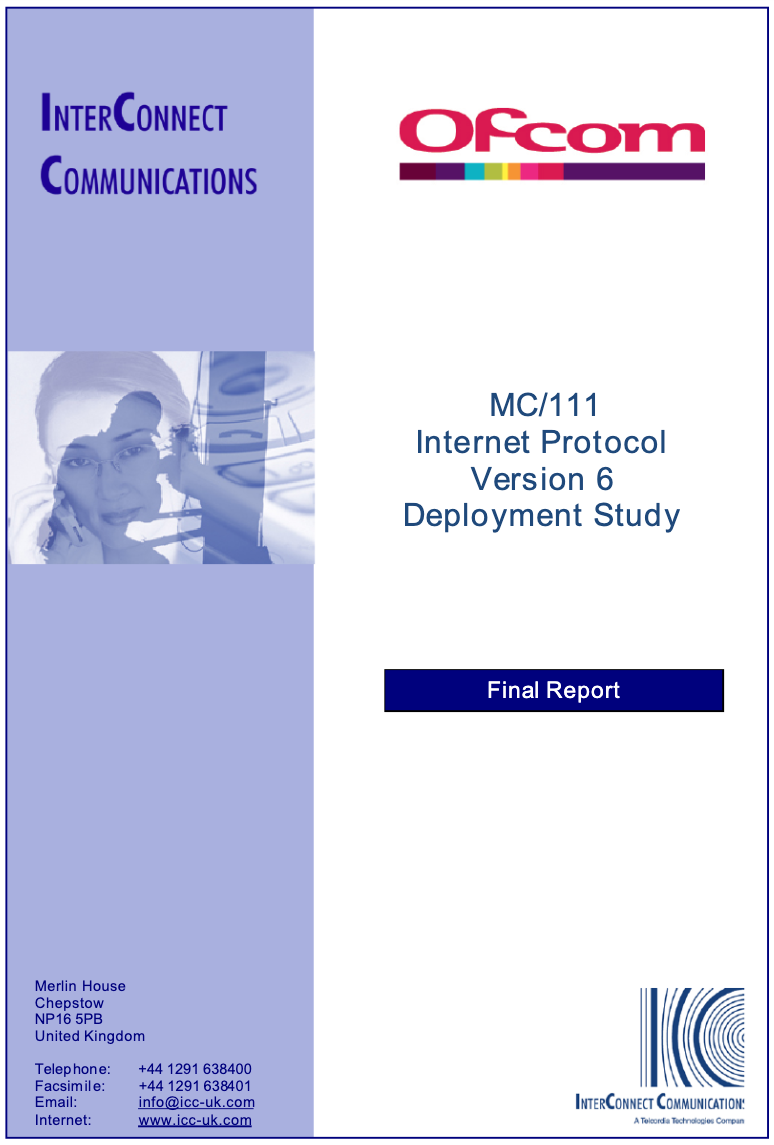
Description
MC/111 Study for Ofcom about IPv6 Deployment and the risks involved, co-authored with InterConnect Communications
Blog summary
Today’s Internet is based on the IPv4 protocol (Internet Protocol version 4). It is the foundation for the addressing and routing that largely goes unseen, but is essential to the function of the Internet. In February of 2011, the Internet Assigned Numbers Authority announced that the pool of available IPv4 addresses had been exhausted. In September 2012, Europe’s registry for Internet addresses announced that its pool was exhausted and that extremely restrictive rules for IPv4 address allocation were now in effect. As a result there are no longer enough IPv4 addresses to support future growth, development and economic competitiveness in the global market. This is compounded by trends in Internet use such as mobility, smart devices, smart transport, and remote monitoring. Even without these important trends, the shortage of addresses will be a significant problem.
The successor to the IPv4 protocol has been available for almost 15 years. It is called IPv6 (Internet Protocol version 6). The transition from IPv4 to IPv6 is an essential evolution in the Internet. However, despite being essential to future growth, this evolution has been delayed and has encountered serious difficulties. This report examines those difficulties, which stem from the incompatibility of IPv4 and IPv6. The report provides an overview of IPv6, highlighting the potential impact of slow uptake of IPv6, both to the UK economy and the Internet. The report also looks at how the transition from IPv4 to IPv6 is likely to take place. The report finds that by any measure, the UK lags behind its peers in IPv6 deployment.
About this Blog
Publisher
Ofcom
File type
PDF
File size
1657k
Page count
80
First published on
Invalid Date

